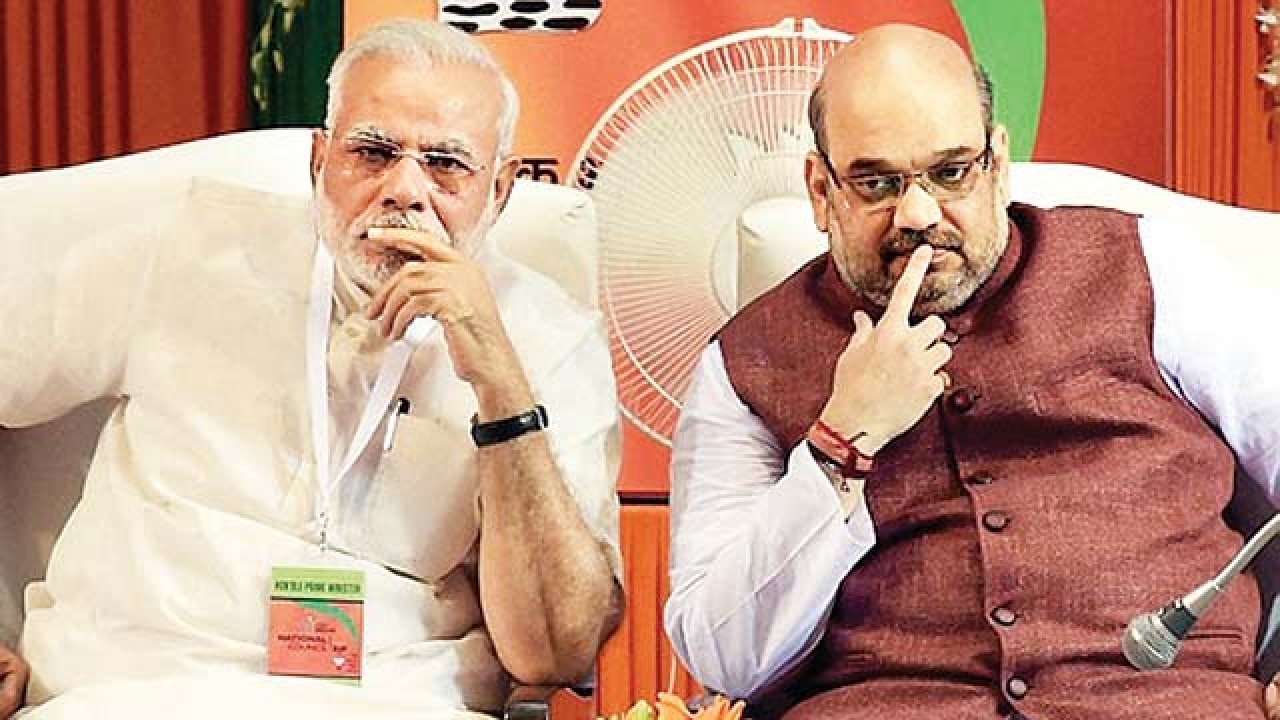
Uttar Pradesh voters have scored a hat-trick, voting three different single-party simple majority governments to power since 2007. The euphoria surrounding Prime Minister Narendra Modi, first witnessed in 2014, has resulted in another Modi tsunami sweeping the state. It was, however, another matter that Akhilesh Yadav, Rahul Gandhi, Mayawati, and Ajit Singh failed to read the writing on the wall. Both Akhilesh and Rahul failed to rope in Mayawati to make a Bihar-like mahagathbandhan (grand alliance) along with the RLD, JD (U), and RJD to check the Modi juggernaut. The result was a total rout of non-BJP parties. On the eve of Holi, the Modi wave saffronised the UP soil with much ease.
The chemistry between Modi and Amit Shah has worked once again in UP. They broke the myth that parachuting leaders and imported candidates are unsuited to state politics. After losing Bihar, the party risked going to the UP polls with Modi as the face instead of projecting a CM candidate. The duo’s covert communalism and macro-level planning and management carefully combining caste equations, development rhetoric and importing winnable candidates from other parties, including smaller ones, helped the saffron brigade break the previous record of 309 by Congress in 1980. Like Gujarat, the Modi-Shah duo gave a larger space to OBCs and MBCs in UP too, adding them to the party kitty along with its traditional upper caste votebank. To check the alienation of Jats in western UP, Jatavs were wooed to make a dent in Mayawati’s Dalit votebank. The BJP ended up giving over 100 tickets to its old ally Apna Dal, new allies Suheldev Bharatiya Samaj Party and Mahaan Dal, besides Dalit, OBC and MBC candidates from smaller parties who joined BJP recently.
Strategically, Modi made development BJP’s main poll plank when the first phase began on February 11 from western UP and gradually, both he and Shah began consolidation of Hindu votes by playing to non-Yadav sentiments among OBCs and non-Jatavs among Dalits in their rallies. The Shamshan-Kabristaan remarks were also part of this covert Hindu vote polarisation. Modi held 23 rallies and campaigned three days in Varanasi, where the party was losing out ground to the SP-Congress alliance. His overstay in Varanasi, though criticised, helped the BJP win more seats in there and rout the SP-Congress alliance and BSP in eastern UP, winning 129 seats.
A major factor in the BJP’s victory was that voters sought change after the five-year terms they granted Mayawati and Akhilesh. UP voters have shown their maturity again by not giving a second chance to those who fail to perform. For the first time, Muslim voters looked divided on Biradari lines on the pattern of the Pasmanda samaj in Bihar. In many places, lower caste Muslims favoured BSP while upper castes chose the SP-Congress. Mayawati’s decision to field over 100 Musim candidates sowed confusion among Muslims. As a result, BJP candidates easily managed to win from many Muslim-dominated constituencies, including Deoband, known pejoratively as mini Pakistan in UP. The overall poll strategy helped the Modi-Shah duo minimise the demonetization effect among the baniya-vaish community, the party’s loyal supporters.
The unprecedented BJP victory puts a big question mark on Akhilesh and Mayawati. Reeling under a family feud, the SP miserably failed to sell the alliance with Congress to the cadre, despite Akhilesh’s roadshows and joint rallies with Rahul Gandhi. Both alliance partners were locked in fierce contests in 25 seats and failed to mobilise their cadre at the grassroots level and transfer their votes to alliance candidates. Akhilesh’s ‘Kaam Bolta Hain’ slogan belied UP’s overall development and Congress’ poor credibility did not cut any ice. Voters rejected “UP Ko Ye Saath Pasand Hain” outrightly.
Mayawati’s social engineering failed her again. Tickets to nearly 100 Muslim and 113 upper castes not only divided Muslim votes but failed to woo any upper caste voters. Like 2014, Dalits, particularly youth and literate ones, deserted her again along with Muslims and upper castes. Mayawati is refusing to learn that the world is changing and voters, sometimes, cast their votes for development, above caste and party lines. Her party was wiped out from Bundelkhand, where the BJP won all 19 seats. The BSP’s graph nosedived in Western, Eastern and Central UP too. Mayawati has blamed the debacle on EVM-rigging. A routed Akhilesh is getting ready for a fresh round of family feud. For the BJP, the tough choice of selecting a Chief Minister remains. In keeping with UP’s identity politics, the caste of the CM choice will be watched closely.
The author is a senior journalist. He toured UP extensively before the elections.